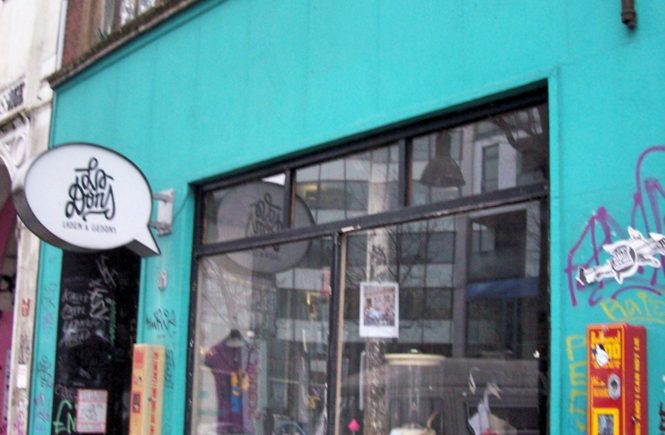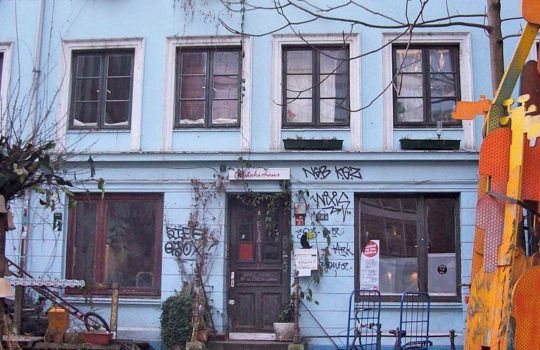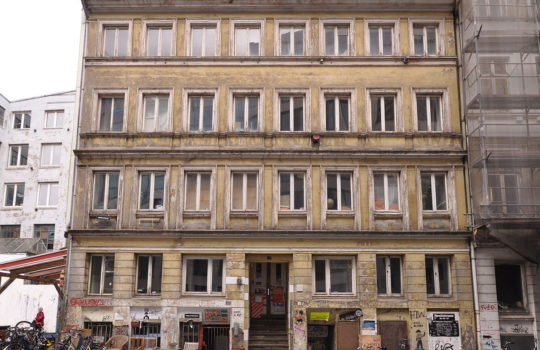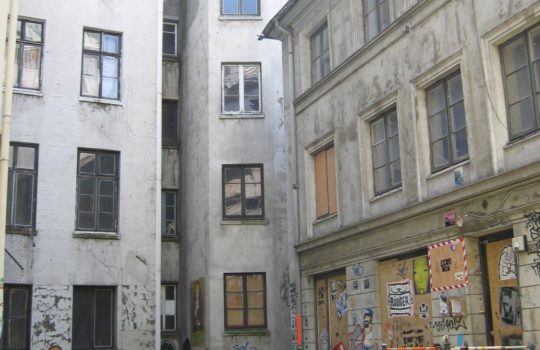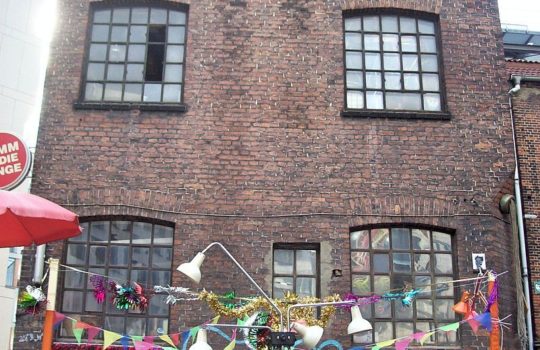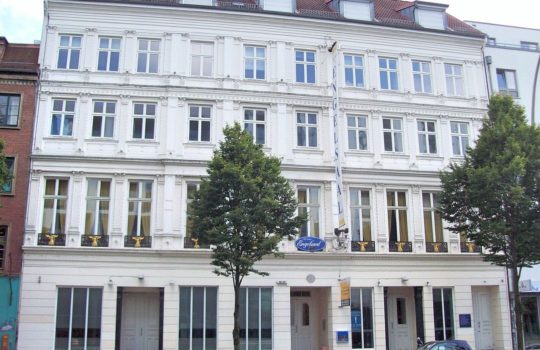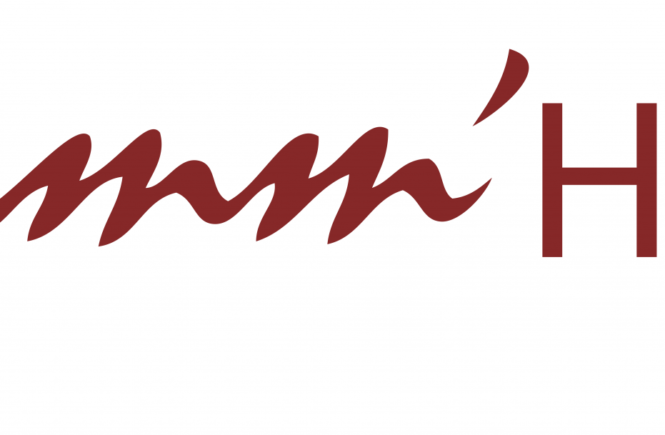The Gängeviertel: a Gallic village in Hamburg
An archway between tall glass and concrete buildings in the busy Neustadt leads you to quite a different world: the Gängeviertel. For almost six years now, the twelve historic buildings between Valentinskamp, Caffamacherreihe and Speckstrasse have been bustling with cultural life. The plaster on the walls of these houses is deteriorating and large installations can be seen on every corner. The centre piece of this alternative quarter is the old factory on Valentinskamp. It hosts concerts, exhibitions, performances, book readings and discussions on urban development and other socio-political themes. The “Galerie Speckstrasse” and the “Raum linksrechts” exhibition venues showcase the works of various artists, and in the bar of the “Jupihaus”, guests pay what they think is appropriate for their drinks.
The Gängeviertel was declared a Gallic village in the summer of 2009, when artists and activists threw a party as a means of peaceful resistance against the concept of a Dutch investor who was seeking to build yet another office complex on the premises. The backyard party, which also included a cultural programme, marked the beginning of the occupation of this former working-class neighbourhood. The aim was to renovate and self-manage the buildings involved and to provide affordable accommodation and workspaces for artists.
The Gängeviertel campaign received broad support from the general public, and four months after the peaceful settlement, the Hamburg Senate repurchased the building ensemble from the Dutch investor. Meanwhile, the buildings are being renovated by the Steg Hamburg mbH, supported with funding from the Investment and Development Bank Hamburg (IFB). The Gängeviertel will continue to be a hive of cultural life also during the course of the renovations works.
Photos: commons.wikimedia.org/wiki/Category:Gängeviertel
Gängeviertel – Hamburg Altstadt | Neustadt
located in the area of
Valentinskamp and Speckstraße
D-20355 Hamburg
